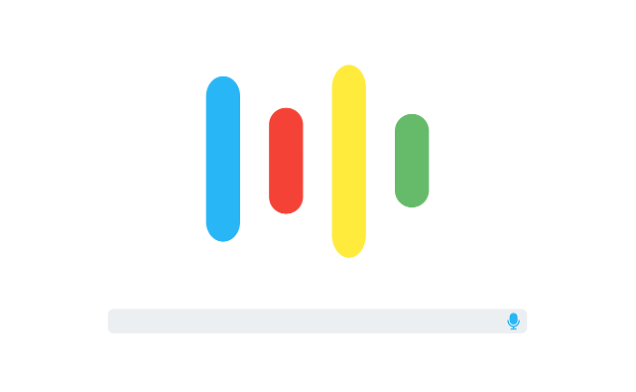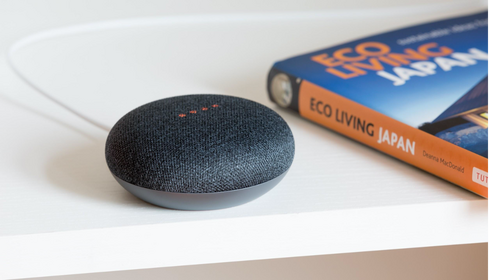
In January 2020, no one anticipated that a pandemic would be the defining event of the year. However, in October, the impact and effects of the COVID-19 pandemic are still currently underway, especially as we see parts of the world preparing for a second lockdown. So during all of this, we ask ourselves: how can technology be used to help us through this? In regards to voice technology, one of the areas of focus for voice tech is in healthcare, and COVID-19 has only heightened that focus. Voice technology is seen as something that could potentially help reduce the spread of infectious diseases such as COVID-19 as well as help to improve current social distancing standards.
Aside from the increased uptick that has been seen during quarantine of increased usage in voice assistants such as Amazon Alexa or Google Home, there are numerous opportunities for the way in which voice technology can be integrated to be a beneficial feature of our “new” normal. Additionally, the ability to connect to others via voice user interfaces, or even extended reality like social XR, could potentially help individuals to feel socially connected while remaining physically distant.
The Impact of Voice Tech Systems in 2020
In this article, we will explore some of the areas where the impact of voice technology in the new normal we can see are banking, healthcare, reduction of touch interfaces, as well as discuss the mounting security concerns for users and these interfaces.
Voice + Healthcare

As follows, one of the biggest areas in which voice technology can make a difference as we navigate the new normal is in healthcare. The implementation of voice technology in the healthcare system can be beneficial in increasing the accessibility of medical information and advice, alleviate some of the strain placed on physicians and patients, as well as allow individuals to access healthcare-related services from the comfort of their homes. “Healthcare is an ever-evolving field, from new policies and research to advances in medical technology and drug trials. It’s also a global industry totaling more than $8 billion annually. Finding ways to streamline this system can save both money and lives, making the scramble for industry-disrupting technologies quite competitive” (source). The implementation of voice-technology or voice-assistants that have the capacity to provide 24-hour on-demand information and answers would greatly alleviate the responsibilities and strain placed on physicians and patients, which is something that during pandemics would be invaluable.
If an individual was able to engage with a voice assistant that could provide advice, provide a diagnosis, schedule an appointment with a doctor, locate a nearby office or hospital, order antibiotics (or a COVID-19 test), it would effectively increase the reach and capacity of healthcare services for patients everywhere while simultaneously reducing the amount of work placed on healthcare workers everywhere. Voice technology can also be used to monitor and assess patients remotely, and to help patients overcome barriers to medical treatments such as time-sensitive appointments.
Voice + ZeroUI
The rise of Zero UI (user interface) is not something that is new, however, it is something that in a world where we are wary of touching surfaces, could be an important innovation. Already we have begun to see a large increase in the use of voice technology in the home, such as using Amazon Alexa for cooking recipes or even COVID-related information (source). This increased use in voice technology in the home could be signaling an increased comfortability, as well as a need, to implement voice technology outside of the home to help us navigate the new normal a little more safely.
By turning various touchable interfaces, such as elevator buttons, into voice user interfaces, it eliminates the need for human contact with a screen many folks touch and a potentially contaminated surface. Voice technology can assist users to complete tasks that would have otherwise been required to complete by interacting with a device or screen, thus allowing users to complete their tasks safely. The application of voice-user interfaces can help users find touchless means of completing their shopping, ordering food, or even interacting with their favorite brands. Recently, we have seen Mastercard announce that they will be introducing voice technology kiosks for ordering and payment for quick-service restaurants such as Circle K, Dunkin, and White Castle.
Voice + Banking
Voice technology can also change the financial and banking industry. In addition to streamlining customer requests, implementing more voice technology in the banking industry can also help to reduce unnecessary human touch-points in light of COVID-19. This includes the adoption of voice payments, security features that can confirm customer identity when calling in, streamlining customer service requests, or allowing customers to ask questions regarding their banking or accounts through a voice assistant or on their smartphones. And while the implementation of voice-activated consumer banking is not new, it is clear why there is an increased push for this during these times. However, several security concerns are surrounding the implementation of voice technology and banking, such as ensuring customer trust, support, and privacy.
Voice + Automotive Industry
Additionally, consumers are becoming more comfortable using in-var voice assistants, with total in-car voice assistant users totaling almost 130 million in the U.S, with 83.8 million users active monthly. This statistic indicates that in-car voice assistance has a significantly higher consumer reach than smart speakers do, indicating the importance of being able to interact with devices hands-free when driving (source). “Voice in the home is useful but unessential, but in the car, with an increasing amount of distractions, buttons, and obstacles to navigate, it’s critical” (source). While it might seem like an ideal scenario to have drivers interact with their devices and vehicles through using their voice, as it means their eyes can remain on their road and their hands on the wheel. However, there has been research conducted examining whether interacting with voice technology while driving could be a potential source of driver distraction. Research conducted by the American Automobile Association (AAA) focused on measuring cognitive distraction in the automobile indicated that using voice-activated technology in cars can cause higher levels of cognitive distraction and workload when driving.
Voice + Security Concerns
While users are becoming more comfortable with using voice technology in their daily lives, it does not mean that there do not exist several concerns and implications surrounding the widespread adoption of voice technology. The main concerns and impacts surrounding voice technology that is currently being discussed are security concerns, potential driver distractions, and the use of deep fakes. Consumers are concerned with the ability to break into voice-enabled devices, both to listen in to private conversations and also to intercept one’s voice and use that voiceprint for other purposes. Taking an individual's voiceprint and replicating it for other purposes is called a “replay attack”. Replay attacks can grant access to financial institutions, security devices, and more. Additionally, once an individual's voiceprint has been replicated- it is possible to use that voiceprint to then create a deepfake, which is a fake automated voice, that sounds just like the individual’s own voice. This type of technology is already being used nefariously, as a voice deepfake was used to scam a CEO of a UK-based energy firm out of $243,000.
There is also the concern surrounding data collection and voice-enabled devices since the devices are “always listening” for that wake word to activate them. The notion of the devices “always listening” has the potential to raise security concerns for consumers in regards to which part of their conversations are listened to and stored as data by the device.
Watch Our EmTech Masterclass: Voice Tech Talk
Learn more about Voice Technology from one of our recent EmTech Masterclass sessions, Voice Tech Talk, and stay tuned for our next session coming in 2021!
READ MORE: What Are We Talking About? Voice Technology Terms You Need to Know, Conversational AI in Automotive, Voice Assistive Technology, Voice Tech Takeaways from Voice Global











Comments
Add Comment